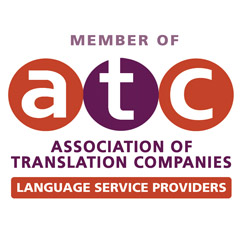In today’s world, it’s really important to translate technical documents correctly so people can understand them no matter what language they speak. These documents could be anything from user manuals to software guides or engineering details. Making sure the translations are accurate and clear is super important. But, it’s not always easy. There are lots of challenges like tricky words and cultural differences. In this article, we’ll share some useful tips to help you translate technical documents better, so they stay accurate and easy to understand.
Understanding the Source Material
Before you start translating, it’s really important to fully understand the document you’re working on. Technical documents usually have lots of complicated words and phrases that might be new to you. So, it’s essential to do some research and get to know the subject really well. This will help you make sure your translations are spot on.
Choosing the Right Translator
Picking the best translator is super important for getting top-notch translations. The ideal translator should know a lot about the subject they’re translating and be really good at the language they’re translating into. It’s a good idea to choose someone who has worked on technical stuff before and pays close attention to detail to make sure everything is accurate.
Using Translation Tools
Translation tools are like treasure chests for translators. They help keep the wording consistent and make translating faster. But, it’s important to use them wisely and not rely on them completely. Even though automated translation can get things started, it’s crucial for human translators to double-check and improve the translation to make sure it’s just right.
Maintaining Consistency
Consistency is super important when translating technical stuff, especially with the words and how things look. Making glossaries and style guides can really help keep everything the same across all the translated documents. It’s really important to set up clear rules about which words to use and stick to them all the way through the translating job.
Clarifying Ambiguities
Technical documents can sometimes be unclear, which can cause confusion if not handled carefully. Translators need to be really careful in finding and fixing any unclear parts in the original text. If they’re not sure about something, it’s really important to talk to the client or the person who wrote the document to make sure the translation is spot on.
Quality Assurance
Making sure translated documents are accurate and clear is super important. To do this, it’s essential to have a really good quality check system in place. This might mean having lots of people look over the translations multiple times to find any mistakes or things that don’t make sense. Spending time and effort on quality checks from the start can save a lot of trouble later on.
Formatting and Layout
Translators don’t just translate words—they also need to make sure the document looks good. This means making sure everything is in the right place, the fonts look the same, and any pictures or charts make sense in different languages. When a document is well-organized, it’s easier to read and makes a good impression.
Cultural Sensitivity
When translating technical stuff for people all around the world, it’s really important to think about their different cultures. To make sure everyone understands, it’s best to avoid using phrases or jokes that only make sense in one language or culture. Being sensitive to different cultures helps make sure everyone feels included and understands the translated document.
Testing and Feedback
Getting feedback from people who will actually use the translated document is really important. Testing it with them can show if there are any parts that aren’t clear or might cause confusion. By testing it out and getting feedback, translators can keep making improvements until the final version is just right for the people who will use it.
Continuous Learning
The world of translation is always changing, with new words and ways of doing things popping up all the time. Translators need to keep learning and staying on top of these changes to do their job well. By always learning new things, translators can keep being really good at what they do and make sure they give clients the best translations possible.
Case Studies
Let’s look at some real examples to see why getting technical translations right is so crucial. Take, for instance, a software company that translated its user manual into various languages without thinking about cultural differences. This left users feeling confused. But when they went back and made the translations better, considering cultural differences, users found it easier to understand, and they were much happier with the manual.
Common Pitfalls to Avoid
When translating technical documents, it’s essential to watch out for some common mistakes. These include relying too much on machine translation, not paying attention to who will read the document and in what situation, and forgetting to update translations regularly. By knowing about these mistakes and doing things to stop them from happening, translators can make sure their translations are really good and do what they’re supposed to do.
Conclusion
To sum up, translating technical documents needs a lot of focus on little things and knowing both what you’re translating and who will read it. By following the advice in this article, translators can make sure their translations are clear and correct, which helps people understand each other even if they speak different languages.
FAQs
1. How do I find a reliable translator for technical documents?
– Look for translators with subject matter expertise and a proven track record of accuracy in technical translation. Translation tools can help streamline the translation process and ensure consistency in terminology.
2. How can I ensure cultural sensitivity in translations?
– Avoid language-specific references and idioms, and consider cultural nuances when translating.
3. What should I do if I encounter ambiguous terms in the source text?
– Communicate with the client or author for clarification to ensure the accuracy of the translation.
4. How often should translated documents be updated?
– Translated documents should be updated regularly to reflect changes in terminology and technology.
Find more on www.traductoresabc.com




